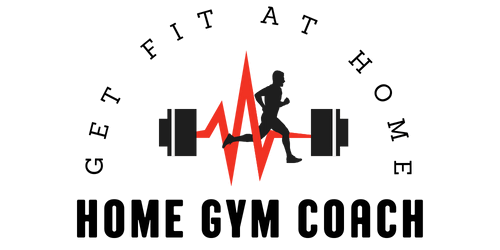Are you tired of generic workout routines that do not cater to your specific fitness goals? Look no further! This article provides valuable tips for creating a custom workout plan that is tailored to your unique needs. From identifying your goals to designing a schedule that fits your lifestyle, you’ll discover practical advice to help you achieve success on your fitness journey. Say goodbye to one-size-fits-all workouts and say hello to a personalized approach that works for you!

Determining Your Goals
When embarking on a fitness journey, it’s essential to start by determining your goals. What do you want to achieve? Is it weight loss, muscle gain, improved endurance, or general overall fitness? By having a clear understanding of what you want to accomplish, you can tailor your workout plan to meet those specific objectives.
Assessing Your Fitness Level
Before diving into any intense workout regimen, it’s crucial to assess your current fitness level. This will help you understand where you currently stand and what areas you need to focus on. You can evaluate your fitness level through various tests, such as measuring your cardiovascular endurance, muscular strength, and flexibility. This assessment will serve as a benchmark, allowing you to track your progress as you move forward.
Setting Realistic Goals
While it’s important to have ambitious goals, it’s equally essential to set realistic expectations. Setting unattainable goals can lead to frustration and disappointment, ultimately derailing your fitness journey. Consider your current fitness level, time availability, and any potential limitations when setting your goals. Remember, progress takes time, so be patient with yourself and celebrate even the smallest victories along the way.
Identifying Your Priorities
Alongside determining your fitness goals, it’s crucial to identify your priorities. What aspects of fitness are most important to you? Is it building strength, improving flexibility, or enhancing cardiovascular health? By understanding your priorities, you can design a workout plan that emphasizes those areas. Remember, everyone’s priorities are unique, so don’t be swayed by trends or others’ goals. Focus on what truly matters to you and align your plan accordingly.
Understanding Your Body
To create a workout plan that caters to your individual needs, it’s important to have an understanding of your body.
Knowing Your Body Type
Different body types respond differently to exercise and have specific strengths and weaknesses. The three main body types are ectomorph, mesomorph, and endomorph. Ectomorphs are naturally lean and have a harder time gaining muscle, while mesomorphs have a more muscular build and tend to respond well to strength training. Endomorphs have a higher tendency to store fat and may need to focus on both cardiovascular exercises and strength training. By identifying your body type, you can tailor your workout plan to maximize your results.
Considering Any Existing Conditions
It’s essential to consider any existing health conditions or injuries when designing your workout plan. Consult with your healthcare provider to understand any limitations or precautions you should take. They can provide valuable guidance on exercises that are safe and beneficial for your specific condition. It’s important to listen to your body and avoid pushing yourself too hard, especially if you have any pre-existing health concerns.
Knowing Your Limitations
In addition to existing conditions, it’s important to know your limitations beyond just physical health. Consider factors such as work schedule, family commitments, and personal preferences. Be realistic about the time and energy you can dedicate to your workouts. If you know you’re not a morning person, it may be better to schedule your exercise sessions later in the day. By acknowledging your limitations, you can create a workout plan that is sustainable and fits seamlessly into your lifestyle.

Choosing the Right Exercises
When creating a custom workout plan, choosing the right exercises is crucial for achieving your goals.
Cardiovascular Exercises
Cardiovascular exercises, also known as aerobic exercises, are essential for improving cardiovascular fitness and burning calories. Walking, running, cycling, swimming, and dancing are all excellent options to get your heart rate up. Choose exercises that you enjoy, as this will increase your likelihood of sticking to your plan. Aim for at least 150 minutes of moderate-intensity aerobic activity per week or 75 minutes of vigorous-intensity aerobic activity. Mixing up the types of cardiovascular exercises you do can also help prevent boredom and keep your workouts fun and exciting.
Strength Training Exercises
Strength training is vital for building lean muscle mass, increasing metabolism, and improving overall strength and posture. Incorporate exercises that target all major muscle groups, such as squats, lunges, push-ups, and dumbbell or resistance band exercises. Start with lighter weights or bodyweight exercises and gradually increase the resistance as you get stronger. Aim for two to three days of strength training per week, allowing at least 48 hours of rest between sessions to give your muscles time to recover and grow.
Flexibility and Stretching Exercises
Flexibility exercises are often overlooked but play a crucial role in maintaining joint range of motion, preventing injuries, and improving overall mobility. Incorporate stretching exercises, such as yoga or Pilates, into your workout routine at least two to three times a week. These exercises help lengthen and strengthen muscles, improve posture, and promote relaxation. Dynamic stretching before workouts and static stretching after workouts can help improve flexibility and reduce muscle stiffness.
Designing a Balanced Routine
A balanced workout routine ensures that you target all aspects of fitness to achieve well-rounded results.
Including Warm-up and Cool-down
Before diving into your main workout, it’s vital to include a warm-up session to prepare your body for exercise. This can include dynamic stretching, light cardio, and mobility exercises. A warm-up helps increase blood flow to the muscles, improves flexibility, and reduces the risk of injury. Similarly, a cool-down period is essential to gradually bring your heart rate down and allow your body to recover. Finish your workouts with static stretching and deep breathing exercises to promote relaxation and reduce muscle soreness.
Balancing Aerobic and Strength Training
In your weekly routine, make sure to strike a balance between aerobic exercises and strength training. Both are equally important for overall fitness. Allocate specific days for cardiovascular exercises and separate days for strength training. Alternatively, you can incorporate circuit training or interval training that combines both cardio and strength exercises within a single workout. This helps maximize calorie burn, build lean muscle, and improve endurance.
Incorporating Flexibility Exercises
Don’t forget to allocate time for flexibility exercises in your weekly routine. This can be done either as a separate workout or as part of your warm-up and cool-down sessions. By incorporating flexibility exercises into your routine, you’ll improve joint mobility, posture, and overall flexibility. Remember, being flexible not only helps with exercise performance but also reduces the risk of injuries in day-to-day activities.

Scheduling and Commitment
Creating a workout plan is one thing, but making a commitment to follow through is equally important.
Finding the Right Time
Consider your daily schedule and commitments to find the best time to incorporate your workouts. It may be early mornings, during your lunch break, or evenings. The key is to choose a time that works best for you and allows you to be consistent. If you struggle with motivation, consider exercising with a friend or joining a group class. Accountability can make a significant difference in sticking to your plan.
Creating a Realistic Schedule
When creating your workout schedule, be realistic about the time you can devote to exercise. Starting with shorter sessions and gradually increasing the duration can help build consistency. Remember, consistency is more important than intensity when it comes to achieving your fitness goals. If you’re short on time, consider incorporating high-intensity interval training (HIIT) into your routine, which provides an efficient workout in a shorter amount of time.
Staying Consistent
Consistency is key in seeing progress and reaping the benefits of your workout plan. Even on days when you may not feel motivated, remind yourself of your goals and the positive impact exercise has on your physical and mental well-being. Stay committed to your plan, even if it means making adjustments along the way. Consistency builds habits, and once exercise becomes part of your routine, it will feel more natural and enjoyable.
Progression and Variety
To continue challenging your body and avoid plateauing, incorporating progression and variety into your workout plan is crucial.
Gradually Increasing Intensity
As your fitness level improves, it’s important to gradually increase the intensity of your workouts. This can be done by increasing the duration, intensity, or resistance of your exercises. Pushing yourself beyond your comfort zone challenges your body and encourages continued progress. However, always listen to your body and avoid overexertion or pushing yourself too hard, as this can lead to injuries.
Adding Challenges and Variation
To keep your workouts engaging and prevent boredom, add challenges and variation to your routine. This can include incorporating new exercises, trying different workout formats, or joining fitness classes. Adding variety not only keeps your workouts exciting but also challenges your muscles in different ways, leading to greater overall fitness gains.
Monitoring and Adjusting
Regularly monitor your progress and assess how your body is responding to your workout plan. This can be done by tracking your strength, endurance, and flexibility measurements or using fitness apps or devices that provide data and insights. Based on your observations, adjust your plan as needed. This may involve increasing the frequency, changing exercise selection, or modifying the intensity. By continually monitoring and adjusting, you’ll ensure that your workouts remain effective and aligned with your goals.

Setting Up the Right Environment
Creating the right environment for your workouts can greatly impact your motivation and overall experience.
Creating a Comfortable Space
Designate a comfortable space in your home or find a gym or fitness center that inspires you. Ensure that the area is clean, well-lit, and free from distractions. If exercising at home, consider investing in some gym equipment or accessories that enhance your workouts. Personalize the space to make it inviting and enjoyable, such as playing your favorite music or using scented candles. The more comfortable and inviting your workout space is, the more likely you are to stay consistent and motivated.
Gathering the Necessary Equipment
Depending on your chosen exercises, gather the necessary equipment to support your workouts. This might include dumbbells, resistance bands, yoga mats, or cardio machines. Invest in high-quality equipment that suits your needs and aligns with your goals. Having the right equipment not only ensures safety but also allows you to perform exercises effectively and efficiently.
Eliminating Distractions
Minimize distractions during your workouts to maximize focus and productivity. Put your phone on silent or in another room to avoid interruptions. If exercising at home, let your family or housemates know your workout schedule to minimize disturbances. Consider listening to motivating music or podcasts that keep you engaged and focused. By eliminating distractions, you can fully immerse yourself in your workout and get the most out of each session.
Seeking Professional Advice
Sometimes, seeking professional advice can provide guidance and expertise to enhance your workout plan.
Consulting with a Personal Trainer
If you’re new to exercise or want to refine your technique, consider consulting with a personal trainer. A qualified trainer can assess your fitness level, help you set realistic goals, and design a personalized workout plan tailored to your needs. They can also provide invaluable guidance on proper form, exercise progression, and preventing injuries. Working with a trainer can fast-track your progress and ensure you’re making the most out of your workouts.
Visiting a Sports Doctor
If you have specific health concerns or chronic conditions, it’s wise to visit a sports doctor or healthcare professional who specializes in exercise medicine. They can evaluate your medical history, perform necessary tests, and provide recommendations to ensure your workout plan is safe and effective. A sports doctor can provide insights on exercise modifications, managing pre-existing conditions, or any precautions you should take to avoid exacerbating your health issues.
Joining Exercise Classes
Joining exercise classes or group fitness sessions can provide a supportive and motivating environment. These classes typically have qualified instructors who lead the workouts, ensuring proper form and technique. The camaraderie and encouragement from fellow participants can boost your motivation and make your workouts more enjoyable. Whether it’s a dance class, HIIT session, or yoga class, finding a group activity that aligns with your goals can elevate your fitness journey.

Listening to Your Body
Listening to your body is key to avoiding injuries and maintaining optimal health throughout your fitness journey.
Recognizing Signs of Overtraining
Pushing yourself too hard without adequate rest and recovery can lead to overtraining. Signs of overtraining include persistent muscle soreness, fatigue, decreased performance, changes in sleep patterns, and increased susceptibility to illness. If you experience any of these symptoms, it’s crucial to listen to your body and take a break. Rest and recovery days are as important as exercise days for allowing your body to repair and grow stronger.
Taking Rest and Recovery Days
Incorporate rest and recovery days into your workout plan. These days allow your muscles, joints, and nervous system to recover from intense workouts. Engaging in active recovery, such as gentle stretching, yoga, or light walking, can also aid in the recovery process. Don’t feel guilty about taking rest days; they are essential for long-term progress and injury prevention. Remember, fitness is a journey, and listening to your body’s needs is a vital part of that process.
Adjusting Your Plan as Needed
Your body is unique, and what works for others may not work for you. Pay attention to how your body responds to different exercises, intensities, and frequencies. If a particular exercise causes discomfort or aggravates an existing condition, modify or replace it with a more suitable alternative. Be flexible and open to adjust your plan as needed to ensure it aligns with your body’s needs and capabilities.
Tracking Your Progress
Tracking your progress is crucial for staying motivated and celebrating your achievements along the way.
Keeping a Workout Journal
Maintain a workout journal to track your workouts, exercises, sets, and repetitions. This provides a visual record of your progress, allowing you to see how far you’ve come. Additionally, you can jot down notes about how you felt during the workout, any modifications made, or future goals. A workout journal is a valuable tool for reflection and staying accountable to your exercise routine.
Using Fitness Apps or Devices
In today’s digital age, various fitness apps and devices can help track your workouts, monitor heart rate, count steps, and provide insights into your progress. These apps and devices can offer data-driven feedback and motivate you to push further. Look for apps or devices that align with your goals and provide features that are important to you. However, remember that these tools are just supplements to your journey and shouldn’t replace your own intuition and enjoyment of exercise.
Setting Milestones and Celebrating Success
Set milestones along your fitness journey to celebrate your progress. These milestones can be based on various aspects such as increased strength, improved endurance, or reaching a specific weight loss goal. Reward yourself when you achieve these milestones, whether it’s treating yourself to a massage, buying a new workout outfit, or indulging in a healthy treat. Celebrating your success reinforces positive behavior and helps maintain motivation for the long term.
Creating a custom workout plan that works for you is an exciting and empowering process. By determining your goals, understanding your body, choosing the right exercises, designing a balanced routine, and maintaining commitment and consistency, you’ll be well on your way to achieving your fitness aspirations. Remember to listen to your body, seek professional advice when needed, and track your progress along the way. With dedication and perseverance, you’ll transform your body and experience the countless benefits of leading an active lifestyle.


